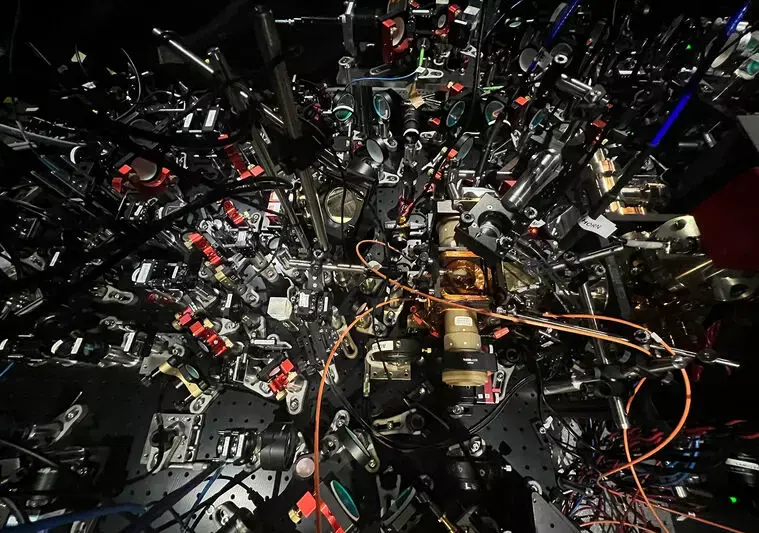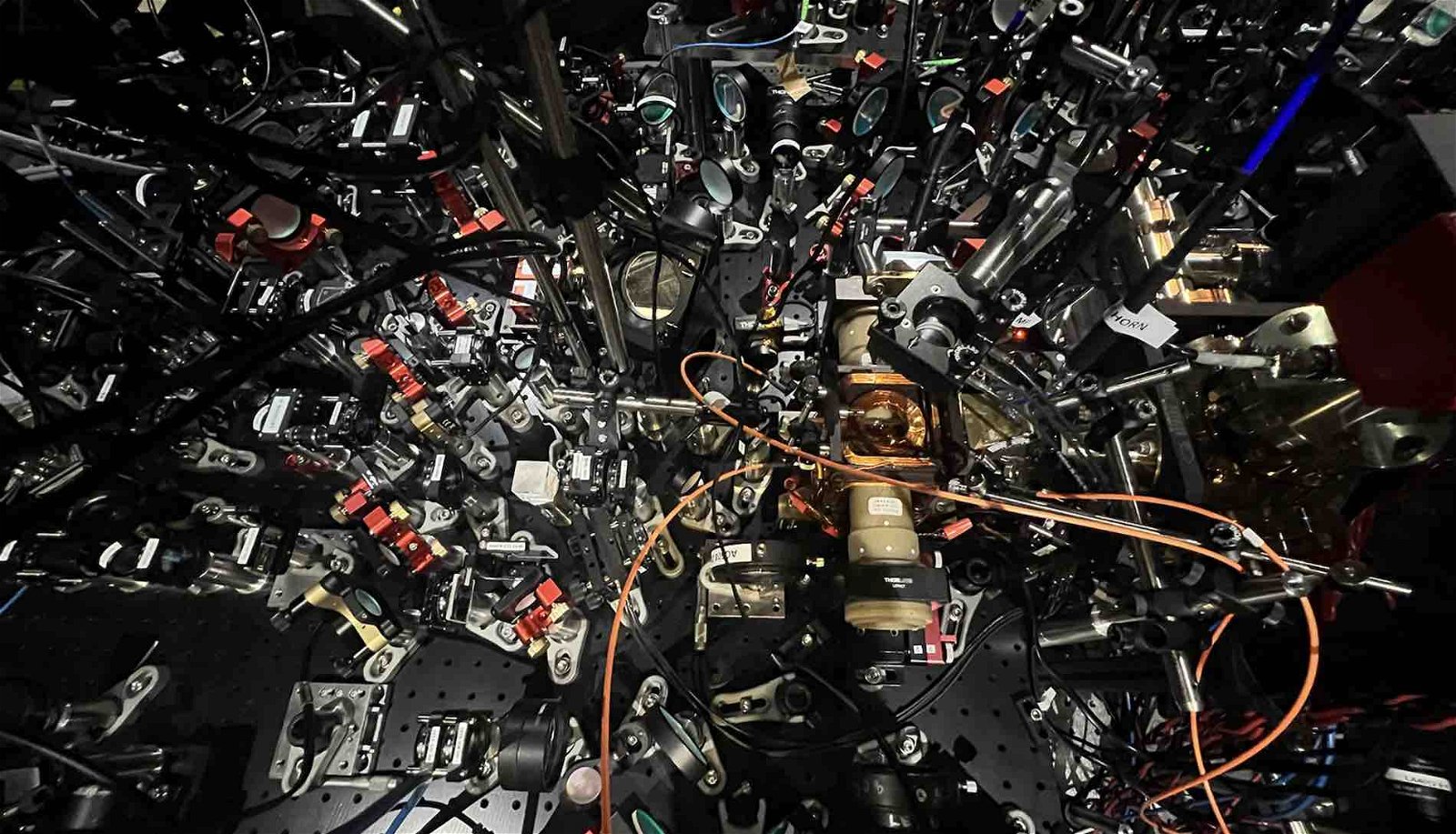A team of Harvard scientists working on a project funded by the Defense Advanced Research Projects Agency (DARPA) has announced a significant breakthrough in the field of quantum computing.
Researchers working with the Optimization with Noisy Intermediate-Scale Quantum (ONISQ) program say they have created the world’s first quantum circuit using logical quantum bits (qubits). The innovation marks a significant stride towards fault-tolerant quantum computing, promising to revolutionize the design of quantum computer processors.
Established in 2020, DARPA says the ONISQ program aims to develop ways to surpass the capabilities of classical supercomputers in solving combinatorial optimization problems, a challenging class of problems relevant to defense and commercial sectors.
“The Optimization with Noisy Intermediate-Scale Quantum devices (ONISQ) program aims to exploit quantum information processing before fully fault-tolerant quantum computers are realized,” DARPA wrote in documents provided during a 2019 Proposer’s Day event. “This effort will pursue a hybrid concept that combines intermediate-sized quantum devices with classical systems to solve a particularly challenging set of problems known as combinatorial optimization.”
In early 2020, DARPA awarded a $6.3 million contract to ColdQuanta, a quantum computing company based in Colorado, to lead the ONISQ project. In November 2023, ColdQuanta underwent a rebranding to Infleqtion, shifting its focus to commercial quantum computing products.
DARPA credited this recent quantum computing breakthrough to the collaborative efforts of researchers from Harvard, MIT, QuEra Computing, Caltech, and Princeton. The research team was led by the co-director of the Harvard Quantum Initiative and professor of physics, Dr. Mikhail Lukin.
In their research, the ONISQ team focused on Rydberg qubits – a type of physical, non-logical qubits. Through this effort, they successfully developed techniques to create error-correcting logical qubits from these “noisy” Rydberg qubits.
Logical qubits are essential for realizing fault-tolerant quantum computing, as they maintain their quantum state despite errors, making them reliable for solving complex problems.
The Harvard laboratory successfully built quantum circuits comprising around 48 Rydberg logical qubits – the largest assembly of logical qubits to date.
The homogeneous nature of Rydberg qubits, where each qubit behaves identically, offers a significant advantage over other qubit types like superconducting qubits, which are unique and non-interchangeable. This homogeneity enables rapid scaling and easy manipulation using lasers on a quantum circuit.
Dr. Mukund Vengalattore, ONISQ program manager at DARPA’s Defense Sciences Office, highlighted the transformative potential of the discovery.
“Rydberg qubits have the beneficial characteristic of being homogenous in their properties – meaning each qubit is indistinguishable from the next in how they behave,” Dr. Vengalattore said in a statement issued by DARPA. “That’s not the case for other platforms such as superconducting qubits where each qubit is unique and therefore not interchangeable.”


(Image Source: DARPA/ vis Harvard University)
According to Dr. Vengalattore, Rydberg qubits can be dynamically reconfigured and transported across the quantum circuit using laser tweezers, allowing for operations not limited to sequential processes. This capability opens up new paradigms in designing scalable quantum computing processors.
Dr. Guido Zuccarello, a technical adviser for the ONISQ program, praised DARPA’s exploratory approach as playing a crucial role in unlocking the potential of Rydberg qubits in quantum computing.
“If anyone had predicted three years ago when the ONISQ program began that Rydberg neutral atoms could function as logical qubits, no one would have believed it,” Dr. Zuccarello said. “It’s the DARPA way to bet on the potential of these less-studied qubits along with the more well-studied ions and superconducting circuits. As an exploratory program, ONISQ gave researchers the leeway to explore unique and new applications beyond just the optimization focus.”
“As a result, the Harvard-led team was able to leverage much more of the potential of these Rydberg qubits and turn them into logical qubits, which is a very significant discovery.”
While significantly more than 48 logical qubits are required to tackle the problems envisioned for quantum computers, researchers say the revolutionary advent of early error-corrected quantum “charts a path toward large-scale logical processors.”
The breakthrough also challenges the traditional belief that millions of physical qubits are necessary for fault-tolerant quantum computing. Thanks to dynamically reconfigurable quantum circuits, the number of logical qubits needed to solve specific problems could be far fewer than previously thought.
DARPA attributed the accelerated application of Rydberg quantum sensing techniques to the agency’s nearly twenty-year commitment to quantum research and bridging the gaps between quantum sensing and quantum information science.
According to Dr. Vengalattore, the ONISQ researchers could draw upon a “rich toolbox of quantum knowledge” developed through multiple DARPA programs.
“This toolbox included deep fundamental and technical insights from many DARPA programs, including OLE [Optical Lattice Emulator], QuASAR [Quantum-Assisted Sensing and Readout], ATN [All Together Now], and DRINQS [Driven and Nonequilibrium Quantum Systems],” Dr. Vengalattore elaborated.
The technical details of the Harvard team’s breakthrough are detailed in a paper published in Nature, offering a glimpse into the future of quantum computing.
Ultimately, the advent of quantum computing stands to revolutionize the world in profound ways akin to the transformative impact of the internet.
The technological leap promises a paradigm shift in processing power and efficiency by taking advantage of quantum mechanical phenomena, redefining our approach to problem-solving across various fields, from cryptography to materials science and beyond.
Experts believe the ripple effects from quantum computing will likely permeate every aspect of society, potentially reshaping industries, economies, and day-to-day life, marking a new era in human technological progress.
As Dr. Vengalattore notes, this recent discovery is not just an end but another step toward making quantum computing a reality.
“As exciting and transformative as these results are, we see this as a stepping stone towards a longer-term vision of actualizing disruptive pathways to error-corrected quantum computing and other areas of quantum technology.”
Tim McMillan is a retired law enforcement executive, investigative reporter and co-founder of The Debrief. His writing typically focuses on defense, national security, the Intelligence Community and topics related to psychology. You can follow Tim on Twitter: @LtTimMcMillan. Tim can be reached by email: tim@thedebrief.org or through encrypted email: LtTimMcMillan@protonmail.com

